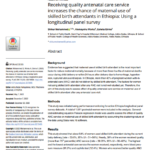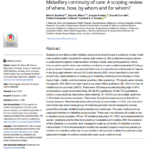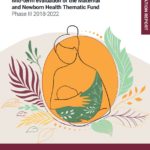Midwifery encompasses care of women during pregnancy, labor, and the postpartum period, as well as care of the newborn.
Midwifery includes measures aimed at preventing health problems in pregnancy, the detection of abnormal conditions, the procurement of medical assistance when necessary, and the execution of emergency measures in the absence of medical help.
2.2m
maternal and newborn deaths, including stillbirths, that could be averted with serious investment in midwives by 2035
900k
midwives needed to address global gaps
All data on this page represents the most recent data available, unless otherwise noted. Please visit our Newborn Numbers page and download the Excel spreadsheet to explore the data further.
Specialized and Effective Care
Worldwide, approximately 295,000 women die every year due to pregnancy and childbirth related complications, 2.4 million newborns die in the first month of life and there are 2 million stillbirths*. Most of these largely preventable deaths occur in low-income countries and in poor and rural areas. Many maternal and newborn deaths can be prevented if competent midwives assist women before, during and after childbirth. Where referral services are in place, midwives are able to identify and refer women and newborns with complications to emergency obstetric or pediatric care when severe complications arise.
Midwives are a special nexus between maternal and newborn care, providing supportive and respective care for women and infants. Balanced between labor and delivery expertise, prevention and management of complications and skilled emergency care, midwives enhance efficient use of resources and promote cost-effective, affordable and sustainable care while improving outcomes for women and babies.
*All data on this page represents the most recent data available. Please visit our Newborn Numbers page and download the Excel spreadsheet to explore the data further.
When midwifery is successfully integrated into a healthcare system, it allows for provision of more effective care for women and infants, as described in The Lancet Midwifery Supplement. Strategic scale up of midwifery services and contributions within existing health facilities can increase not only coverage, but also sustainability, quality of care, and access to life saving interventions.
The International Day of the Midwife occurs each year on May 5th.
Key resources:








